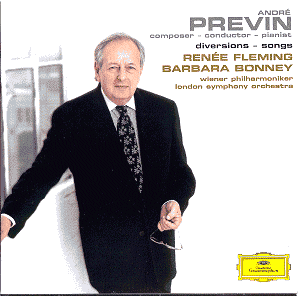 Composer: Cyril Scott
Composer: Cyril Scott
Works: Two Pieces Op. 47: Lotus Land, Columbine; Two Pierrot Pieces Op. 35: Pierrette, Pierrot triste; Poems; Trois Danses tristes Op. 74: Over the Prairie, Two Impressions; Piano Sonata No. 1 Op. 66
Performers: Dennis Hennig, piano
Recording: 1991
Label: ABC Classics Eloquence 465 737-2 [79’27]
Cyril Scott, a pivotal yet often overlooked figure in early 20th-century British music, occupies a unique position within the canon, straddling the line between the lushly romantic and the emerging modernism of his time. His career, characterized by a meteoric rise followed by a steep decline, reflects the complexities of artistic identity during the tumultuous years surrounding the First World War. This collection, performed by Dennis Hennig, surveys a span of Scott’s output from the early 1910s to his first piano sonata in 1921, highlighting the composer’s evolution from salon pieces to more substantial, introspective works.
Hennig’s interpretation captures the essence of Scott’s aesthetic, which often melds impressionistic textures with a distinctly British sensibility. The recital opens with the iconic “Lotus Land,” a piece that epitomizes Scott’s penchant for escapism and exoticism. Here, Hennig’s delicate touch brings forth the shimmering harmonies and fluid lines, evoking a sense of languid beauty that is both captivating and reflective. The companion piece, “Columbine,” while less renowned, offers a rich tapestry of sound that showcases Scott’s ability to create atmospheric depth within a compact form. The two works together serve as a microcosm of Scott’s stylistic palette, where the influence of Ravel is palpable yet filtered through Scott’s personal lens.
The “Two Pierrot Pieces” reveal a more theatrical side of Scott’s artistry, with “Pierrette” and “Pierrot triste” drawing on the tradition of music hall and vaudeville. Hennig navigates the contrasting characters of these pieces with adeptness; the wistfulness of “Pierrot triste” emerges through Hennig’s nuanced dynamics and expressive phrasing. However, the melodrama of the piece risks becoming overly sentimental, as it flirts with clichés reminiscent of both Puccini’s “Nessun dorma” and traditional folk tunes such as the “Londonderry Air.” The balance between sentiment and sophistication remains a challenge, and while Hennig’s interpretation is commendable, it occasionally skews towards the melodramatic.
In the five “Poems,” Scott’s voice becomes increasingly personal and harmonically adventurous. Hennig’s performance captures the sensuousness of the music, especially in the central piece where the bell-like tolling of parallel fourths evokes an authentic sense of longing and introspection. This section, in particular, exemplifies Scott’s ability to fuse technical innovation with emotional depth, presenting a compelling counterpoint to the more salon-like character of earlier works. The “Trois Danses tristes,” especially the “Danse Orientale,” showcases Scott’s fascination with Eastern musical forms, despite his never having traveled to those regions. Hennig imbues this work with a reflective assertiveness, drawing out the inherent contrasts while maintaining a sense of lyrical fluidity.
The Piano Sonata No. 1 Op. 66 marks a significant shift in Scott’s compositional trajectory, showcasing his grappling with form and thematic development. Hennig’s approach to the sonata reveals a thoughtful engagement with its cyclic structure and errant harmonies, particularly in the slow, meditative adagio, where the interplay between assertiveness and introspection is strikingly articulated. The concluding fugal passage stands out as a testament to Scott’s ambition, a departure from the earlier works that encapsulates his evolving voice in a modernist context.
The recording quality of this release is commendable, with ABC Classics providing a clear and resonant sound that captures the piano’s tonal richness. Hennig’s expressive playing is well-served by the engineering, allowing the subtleties of dynamics and articulation to shine through without losing the warmth of the instrument.
The retrospective nature of this performance offers a valuable lens through which to appreciate Scott’s contributions to the piano repertoire. Hennig successfully traces the arc of Scott’s artistic journey, from the idyllic soundscapes of “Lotus Land” to the more complex emotional landscapes of the Sonata. This recording stands as an essential document for those seeking to understand the dualities of Scott’s musical language and the broader narrative of early 20th-century British composition. Strongly recommended for both the curious listener and the seasoned aficionado, this collection exemplifies the richness and depth of Scott’s work, reaffirming his place in the pantheon of British music.



